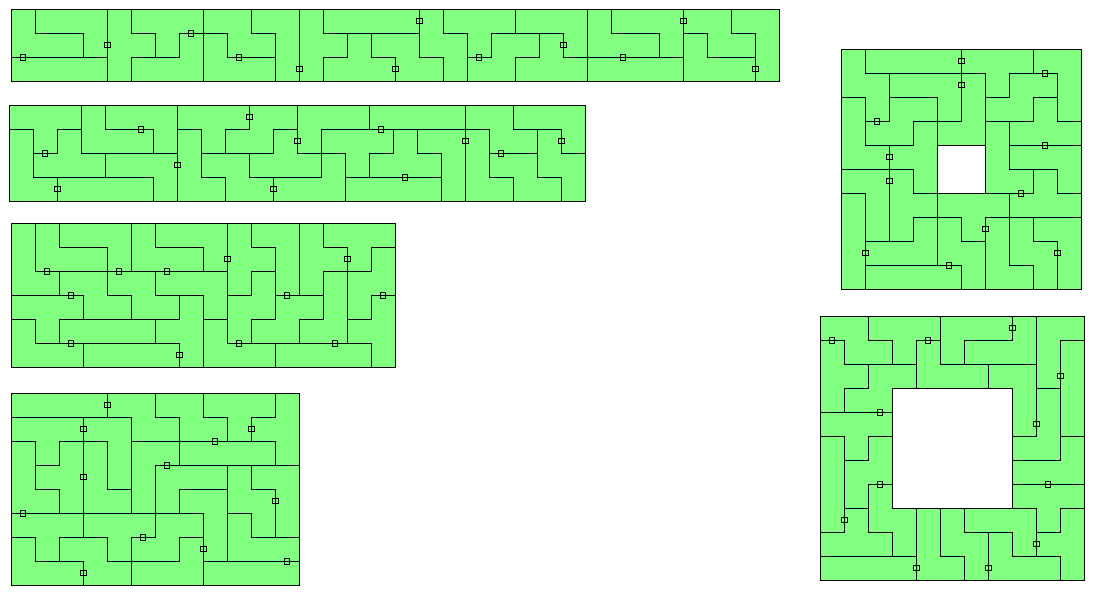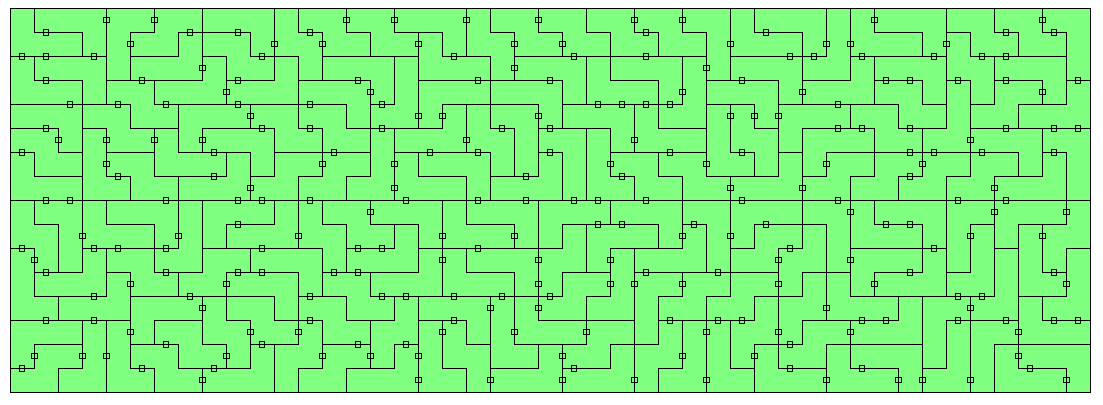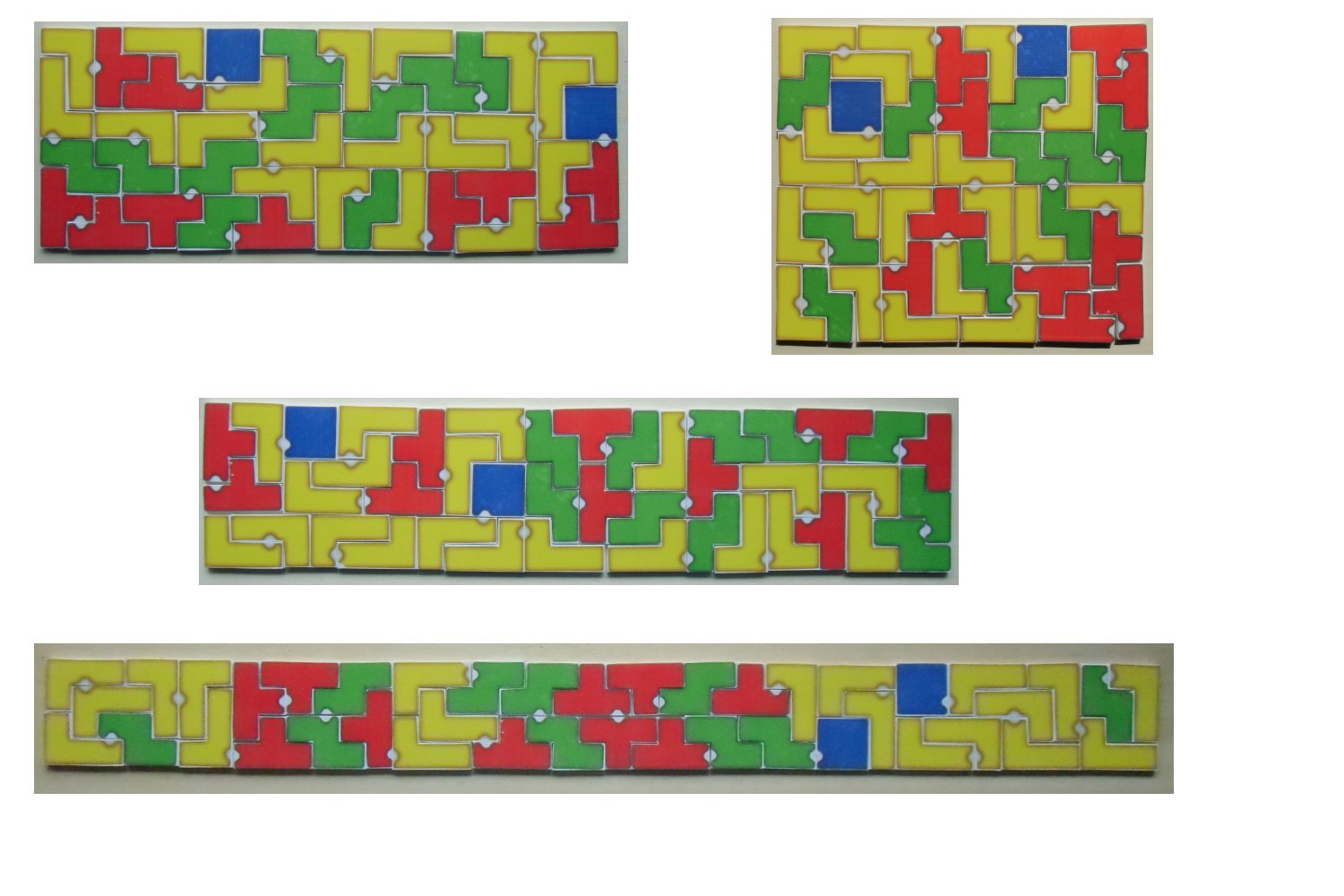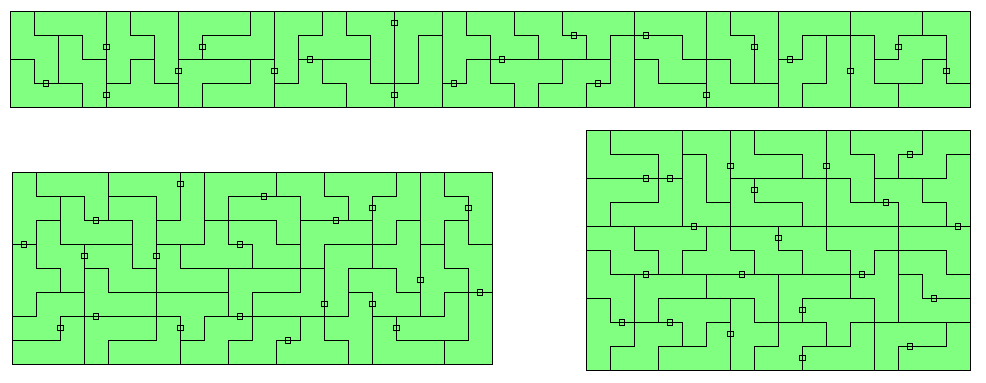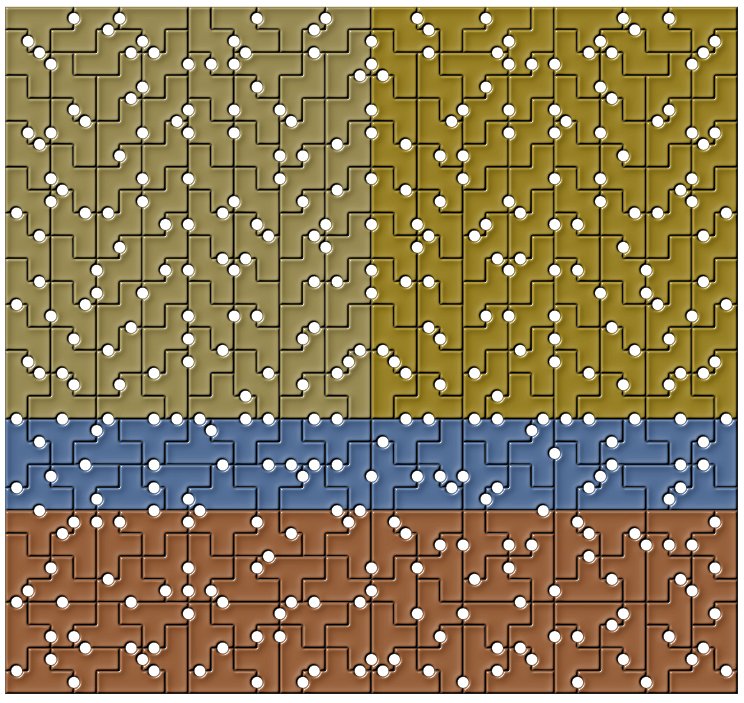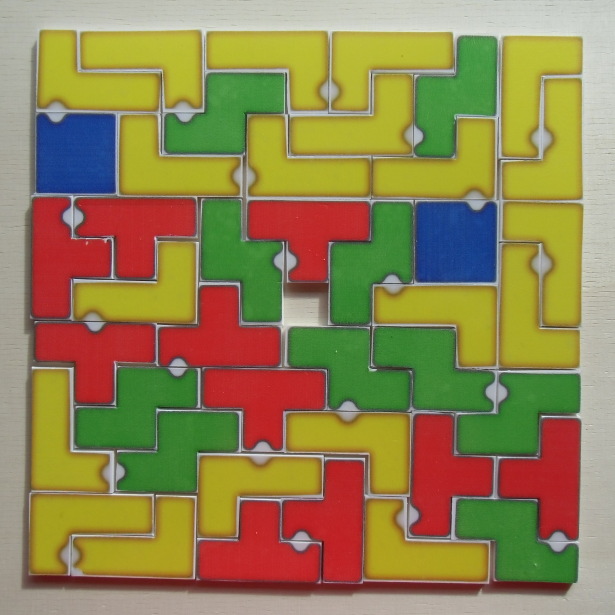

| Number of Notches | Tetromino Type | Number of Pieces | Total Area | Constructions | |||||
|---|---|---|---|---|---|---|---|---|---|
| Two-sided Pieces | 1 | S | L | T | I | O | |||
| 5 | 10 | 6 | 3 | 1 | |||||
| X | X | - | - | - | 15 | 60 | no rectangles odd number of notches |
||
| X | - | X | - | - | 11 | 44 | no rectangles odd number of notches |
||
| X | X | - | X | - | 18 | 72 | 4x18, 6x12, 8x9 rectangles | ||
| X | X | - | - | X | 16 | 64 | 8x8 square, 4x16 rectangle | ||
| X | - | X | X | - | 14 | 56 | 4x14, 7x8 rectangles | ||
| X | X | X | X | - | 24 | 96 | 3x32, 4x24, 6x16, 8x12 rectangles 11²-5², 10²-2² square rings |
||
| X | X | X | - | X | 22 | 88 | 4x22, 8x11 rectangles | ||
| 2 | 25 | 45 | 25 | 15 | 6 | ||||
| X | X | - | - | - | 70 | 280 | no rectangles L-tetromino covering of even and odd columns or rows is unbalanced |
||
| X | - | X | - | - | 50 | 200 | no rectangles T-tetrominoes are unbalanced under checkerboard coloring |
||
| 3 | 60 | 120 | 64 | 32 | 7 | ||||
| X | X | - | - | - | 180 | 720 | 16x45 rectangle | ||
| X | X | X | - | - | 244 | 976 | 16x61 rectangle | ||
| X | X | X | X | - | 276 | 1104 | 16x69 rectangle | ||
| One-sided Pieces | 1 | 10 | 20 | 10 | 5 | 2 | |||
| X | X | - | - | - | 30 | 120 | 8x15, 10x12 rectangles, 11²-1² square ring | ||
| X | - | X | - | - | 20 | 80 | 8x10 rectangle, 9²-1² square ring | ||
| X | X | X | - | - | 40 | 160 | 4x40, 8x20, 10x16 rectangles | ||
| X | X | X | - | X | 42 | 168 | 4x42, 6x28, 8x21, 12x14 rectangles 13²-1² square ring |
||
| 2 | 50 | 90 | 45 | 25 | 8 | ||||
| X | X | - | - | - | 140 | 560 | 8x70 rectangle | ||
| X | - | X | - | - | 95 | 380 | no rectangles T-tetrominoes are unbalanced under checkerboard coloring |
||
| 3 | 120 | 240 | 120 | 60 | 14 | ||||
| X | X | - | - | - | 360 | 1440 | 16x90, 32x45 rectangles | ||
| X | - | X | - | - | 240 | 960 | 32x30 rectangle | ||
